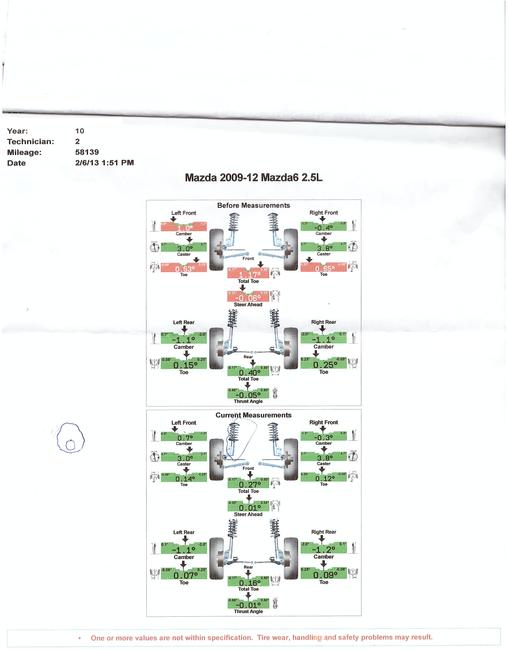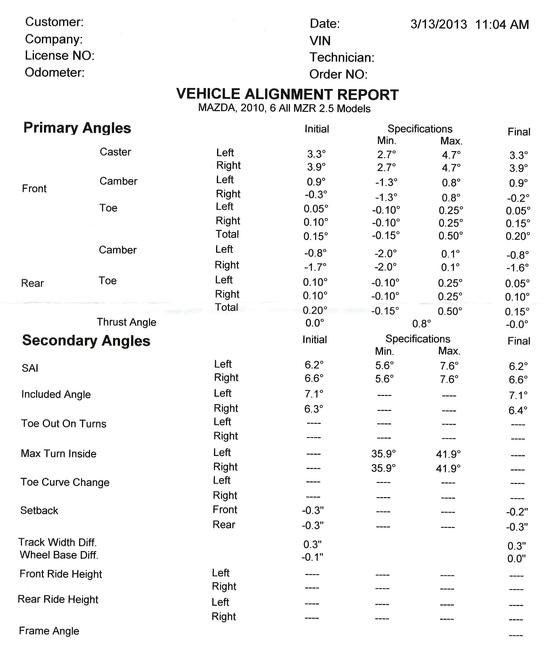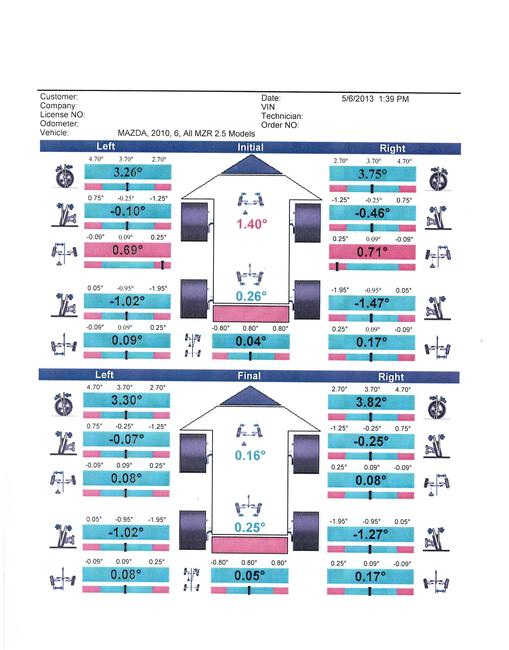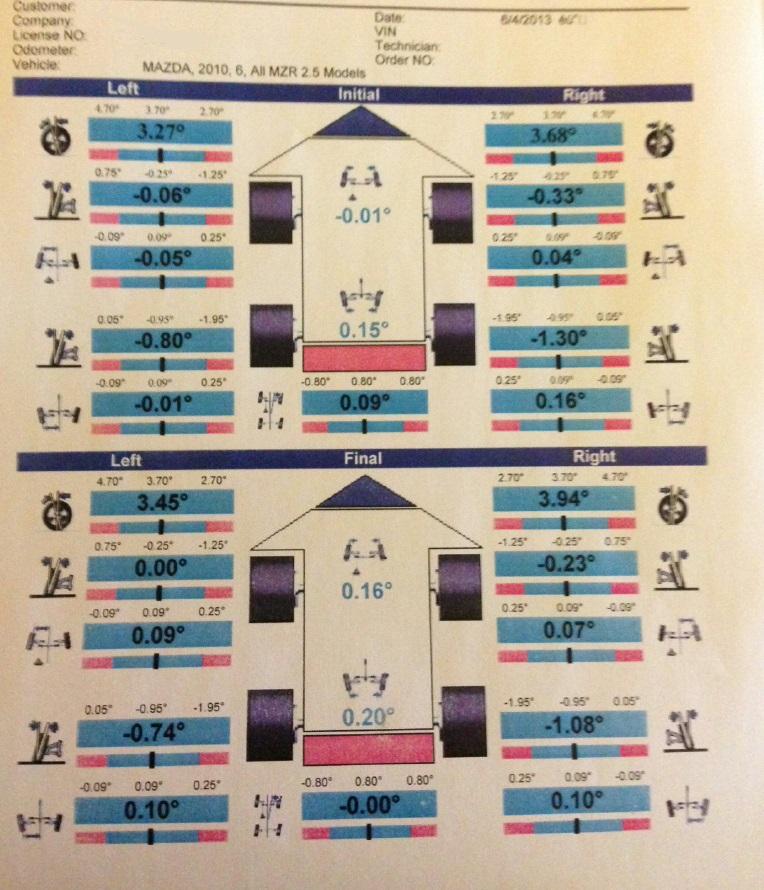I would really appreciate if you could help me with what's now become a very frustrating issue!
I drive a 2010 Mazda 6, iSport, 4-Cyl, 2.5-L, 39,000 miles, which, as you are aware, has a short-long arm suspension system.
After sliding sideways into the curb at 30 - 40 mph with my front left wheel, and after changing the bent rim and straightening the steering wheel (upon impact the steering wheel's center position was changed, such that I had to hold the wheel 20 to 30 degrees to the left for the car to go straight), I have gone from the attached Alignment Readings - February 6, 2013 to Alignment Readings - June 4, 2013, by changing the suspension/steering components in the following order (Please kindly note that Alignment Readings - March 17, 2013 was merely an alignment check. Please also note that the front left camber change from 1.0 to 0.7 on the February 6, 2013 alignment would simply have been a trick by the technician, as camber is non-adjustable on these vehicles.):
1. When I changed the Front Left Steering Knuckle Assembly (Front Left Steering Knuckle, Front Left Wheel Hub, Front Left Wheel Bearing, Front Left ABS Sensor), the front left camber changed from 1.0 to -0.1 (ideal camber being -0.25). This may be viewed on Alignment Readings - May 6, 2013.
2. The next time round, when I changed the Front Left Lower Control Arm, Front Left Upper Control Arm, Front Left Inner Tie Rod, Front Left Inner Tie Rod Boot, Front Left Inner Tie Rod Clamp, Front Left Inner Tie Rod Washer, Front Left Outer Tie Rod, and Front Left Outer Tie Rod Adjust Nut, nothing major changed at all. This may be viewed on Alignment Readings - June 4, 2013.
The reason I replaced the second set of components is because I'm feeling steering wander and weave (directional instability) from 40 mph up. I also have an inconsistent steering feel, the steering wheel jerks a little to the right and back when going over road bumps/dips, and there is a lack of full self-centering after a turn (80% self-centering occurs, not 100%).
If you look at the very first alignment report, it is evident that there is a 0.8 degree of difference between the front left caster and the front right caster. Sliding into the curb seems to have reduced the front left caster.
Also, in a matter of a few weeks the front left caster reading of 3.0 of February 6 has changed to front left caster of 3.3 on March 13.
So, since I have changed the rest of the components, may I, with some degree of certainty, assume that what is causing the problems I just described is a bent or misplaced front left strut?
Another factor that adds to my suspicion for this being a strut issue is that, when measured, the front left side of the vehicle is a quarter of an inch higher than the front right side. Wouldn't this be consistent with the fact that because of the impact the front left caster is reduced, whereby the front left strut is sitting a little further front than it should compared to the vertical line?
The tires are new, so you can rule them out as a cause for this issue (because of tire pressure, uneven tire wear, etc.).
Please kindly advise me.
I really appreciate your insight into this matter!
Best,
Sandy
Tuesday, July 9th, 2013 AT 5:16 PM






